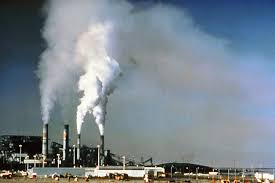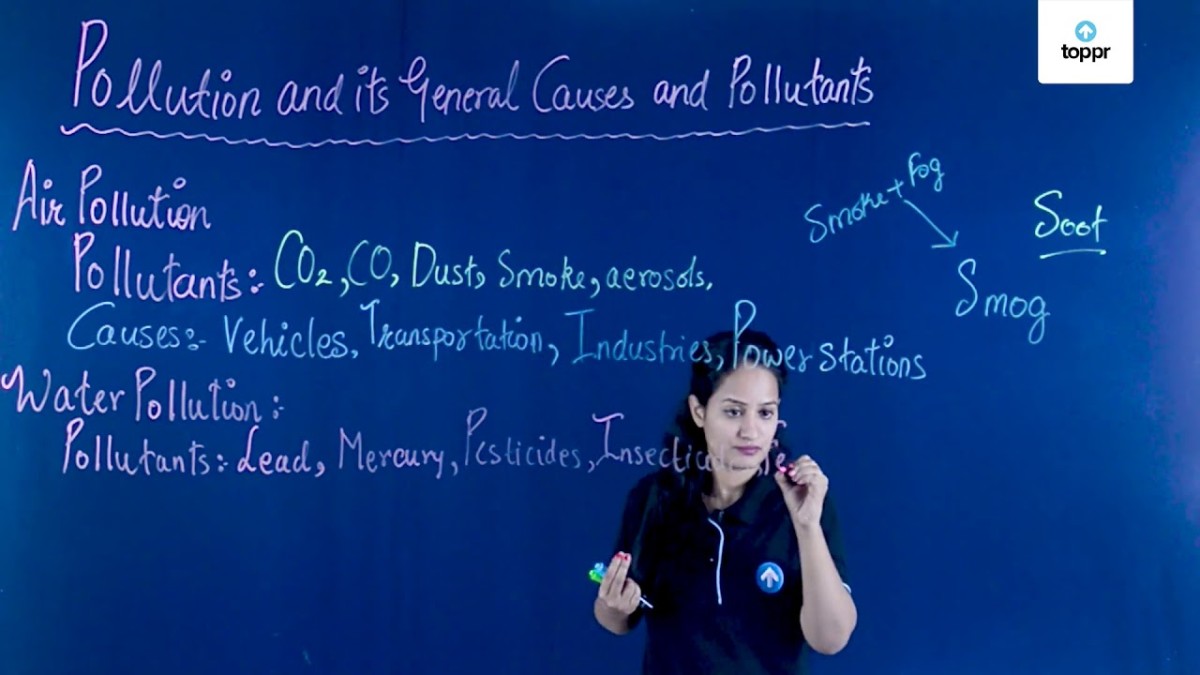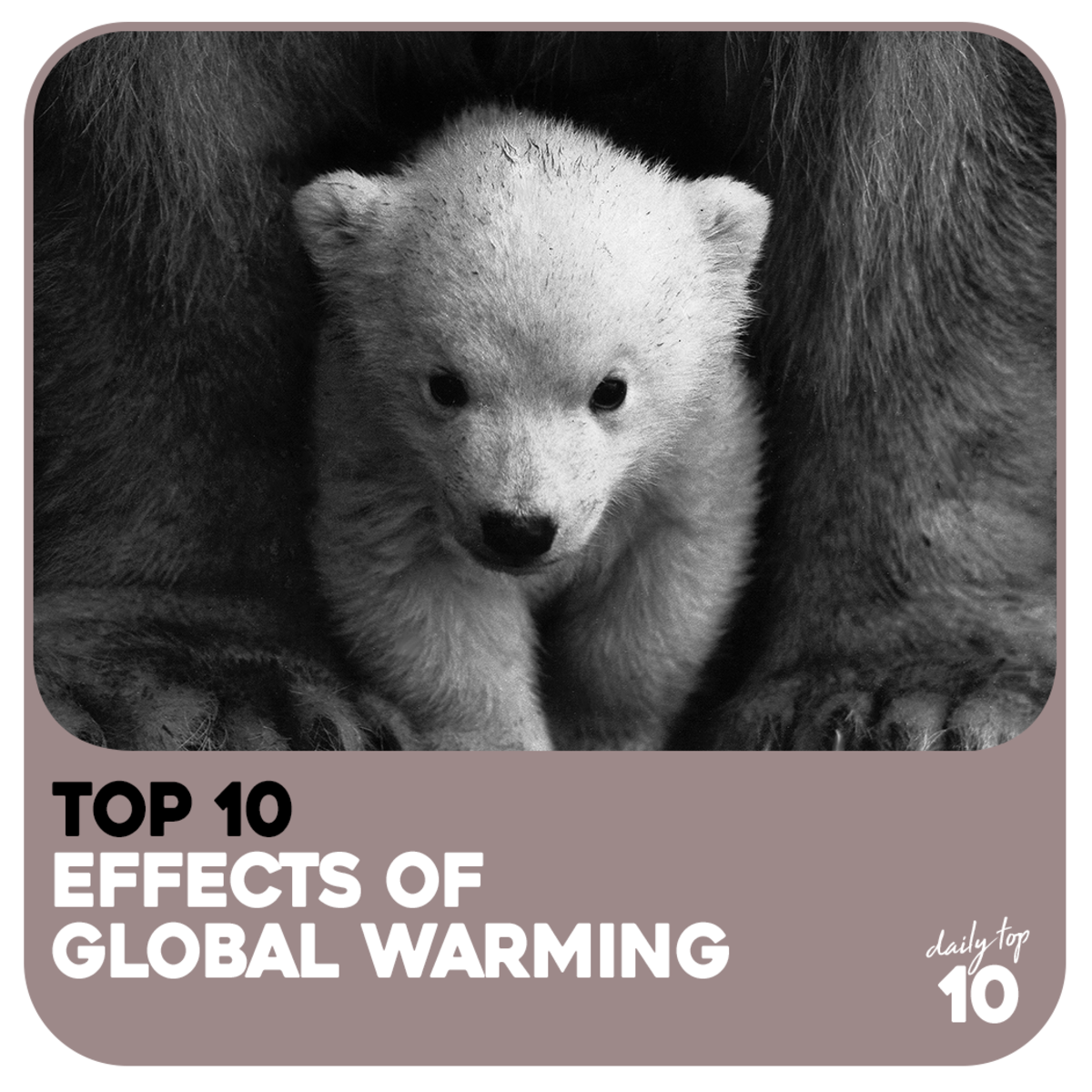Air pollution and diseases caused by it

Air pollution has been blamed for many deaths all over the world. According to World Health Organization, 2.4 million people die each year from causes directly attributable to air pollution with 1.5 million of these deaths attributable to indoor air pollution. Apart from many deaths, air pollution is also responsible for causing many acute and chronic diseases.
Common pollutants of air pollution include chemicals and particulates in the atmosphere. The primary pollutants are as follows—
Sulfur dioxide— It is mainly produced by various industries primarily by coal and petroleum industry and volcanoes. Further oxidation of sulfur dioxide forms sulphuric acid, which causes acid rain.
Nitrogen oxide—Nitrogen dioxide, one of the several nitrogen oxides, is one of the most prominent air pollutant. It is naturally produced by thunderstorms by electric discharge. The reddish brown toxic gas has a characteristic sharp, biting odor.
Carbon monoxide—It is colorless, odorless, non-irritating but highly poisonous gas. It is produced by combustion of fuel such as natural gas, coal or wood. Vehicular exhaust is a major source of carbon monoxide.
Volatile organic compounds (VOC)—They are divided into categories of methane and non-methane. Methane is very efficient greenhouse gas, which contributes to global warming. In non-methane category, aromatic compounds benzene, toluene and xylene are carcinogens and may lead to leukemia. Butadiene is another dangerous compound used in industries.
Particulate matter—Also called fine particles, they are particles of solid or liquid suspended in the gas. Some particulates occur naturally originating from volcanoes, dust storms, forest fires, and living vegetation. Burning of fossil fuels in vehicles, power plants and industries also generate significant number of aerosols. Increased levels of fine particles in the air are associated with health hazards like heart disease, altered lung function and lung cancer.
Persistent free radicals—They are connected to airborne fine particles.
Chlorofluorocarbons (CFC)—They are harmful to the ozone layer.
Ammonia—It is emitted from agricultural processes. It has a characteristic pungent smell. It is also used in pharmaceutical industry. Though widely used, it is caustic and hazardous.
Toxic metals—They are compounds of lead and mercury.
Radioactive pollutants—They are produced by nuclear explosions, nuclear events, war explosives and radioactive decay.
Ozone—It is a molecule of three oxygen atoms bound together. At ground level it is created by a chemical reaction between oxides of nitrogen, and volatile organic compounds (VOC) in the presence of sunlight. Ozone has the same chemical structure whether it occurs high above the earth or at ground level and can be "good" or "bad," depending on its location in the atmosphere.
Most ozone is concentrated in stratosphere at about 25 km in altitude and is considered to be good ozone. In this region, ozone acts as a shield to protect Earth’s surface by absorbing harmful ultraviolet radiation.
Although ozone pollution is formed mainly in urban and suburban areas, it ends up in rural areas as well, carried by prevailing winds or resulting from cars and trucks that travel into rural areas.
Indoor pollutants—Radon gas, a carcinogen, is exuded from the earth and is trapped inside the houses. Building materials including carpeting and plywood emit formaldehyde gas. Paint and solvents give off volatile organic compounds (VOC). Lead paint can degenerate into dust. Carbon monoxide poisoning is caused by chimneys and burning of charcoal indoors. Clothes emit tetrachloro-ethylene for days after dry cleaning. Extensive use of asbestos in industrial and domestic environments is potentially very dangerous. Pets produce dander; people produce dust from minute skin flakes and decomposed hair. There are dust mites in the beddings. Air conditioning systems can incubate Legionnaires’ disease.
A lack of ventilation indoors concentrates air pollution where people often spend the majority of their time.
Diseases caused by air pollution—
Respiratory diseases--
Asthma—Though asthma has an underlying genetic cause, asthma attacks can be triggered by high levels of air pollution. A pollutant like sulfur dioxide causes constriction of smaller airways in the lungs, making breathing harder even for healthy people. In persons with asthma, this constriction can set off a serious and life threatening attack. In fact, asthma attacks, set off by pollutants, are one of the largest causes of deaths due to air pollution.
Chronic pulmonary obstructive disease (COPD) -- It is increasingly caused by air pollution. Basically, COPD has recurring episodes of respiratory problems such as bronchitis. Air pollution can also produce emphysema in those patients.
Cystic fibrosis—It is a chronic lung condition with genetic basis. It is characterized by a blockage of airways of the lungs by the mucus. High levels of air pollution can further aggravate the condition.
Lung cancer—Air pollution is a contributor to lung cancer because of accumulation of small particulate matter from the air in the lungs. Air pollution has been determined to raise the risk of lung cancer as much as second hand smokes.
Other lung conditions—There is a strong correlation between an increase in rate of pneumonia and motor vehicle exhaust levels. Living near urban areas or congested traffic centers can dramatically increase the risk for developing this disease.
Heart disease—
Heart attacks-- Long term exposure to air pollution may cause heart attacks by speeding up atherosclerosis (hardening of arteries) of the coronary arteries. So, there is a direct association between long term fine particulate matter (PM 2.5) concentration and cardiovascular events.
Congenital heart diseases— In a recent study, it has been found that high levels of industrial pollution enhance the possibility of increased heart defects. Another study shows that the incidence of cardiac ventricular septal defects increases with increasing carbon monoxide exposure. Also observed are valvular, aortic and truncal defects associated with high ozone levels.
Cardiac arrhythmias—The incidence of cardiac arrhythmias has been associated with exposure to PM 2.5 in high risk individuals (e.g. individuals having an implanted cardioverter defibrillator). Nitric oxide and carbon monoxide concentrations are strongly related to implanted cardioverter defibrillator discharges, whereas particulate black carbon has lesser degree of association with such events. The risk of mortality from arrhythmias increases in relation to levels of black smoke and PM 10.
Hypertension—Fine and ultra fine particles when inhaled make their way into the blood vessels. Within 15 minutes of inhaling pollutants, there is an increase in blood pressure. Blood vessels react to air pollutants by producing an inflammatory response to attack the foreign matter. The inflammatory response itself can set off a complex physiological reaction that is harmful to blood vessels.
Brain diseases—
The emerging evidence of many studies suggests that air pollution can cause certain neurological diseases such as Alzheimer’s disease, Parkinson’s disease and stroke.
Stroke—Air pollution can cause strokes by speeding up atherosclerosis of the arteries supplying blood to the brain. Higher concentration of fine particulate matter (PM 2.5) are linked to a faster thickening of inner two layers of common carotid artery, an important vessel which provides blood to the head, neck and brain. People living in the more polluted parts of the city have a 2% higher risk of the stroke as compared to people in less polluted parts of the same city.
Multiple sclerosis—It is mainly caused by the prolonged exposure to the second hand smoke.
Parkinson’s disease—Manganese content in ambient air pollution may contribute to this neurodegenerative disease.
Alzheimer’s disease—It is the most prevalent neurodegenerative disease. Environmental exposure to toxic metals, pesticides and air pollution are common risk factors for neurodegenerative diseases.
Brain development—Prenatal exposure to ozone leads to permanent damage to the cerebellum. Maternal exposure to air pollution during the prenatal period is also a risk factor. Prenatal exposure to air pollution may be a risk factor for neuro-developmental disorders such as autism and neuro-psychiatric diseases such as schizophrenia. Maternal exposure to air pollution during the prenatal period is also a risk factor. An association has been found between autism and residential proximity to freeways during the third trimester of pregnancy.
Air pollution and allergy—
Causes allergies—A bacterial protein, called flagellin, common in house dust may worsens allergic response to indoor allergens. It promotes allergic asthma. House dust mites are considered to be the most common cause of asthma and allergic symptoms worldwide.
Air pollution and skin aging—
Increases skin aging—Air pollution contributes to an increase of wrinkles and pigment spots. It causes the detrimental effects through generation of oxidative stress. It has been found that an increase in soot in fine dust is associated with 20% more pigment spots on the forehead and cheeks and 4% increase in laughter lines. An increase in particles from traffic emissions is found to increase pigment spots on the forehead and cheeks by 17% and increase in laughter lines by 3%. For decades, skin aging has been known to result from chronic exposure to solar radiation and more recently to tobacco smoke and air pollution.
Air pollution and diabetes—
Increases the risk of diabetes—Some studies have found links between long term exposure to traffic related air pollution and type 2 diabetes in adults. It has been found that living in areas, where air pollution is prominent, increases the risk of insulin resistance (a precursor to diabetes) in children.
Air pollution and cancers—
Increases the risk of cancers—Researchers have found that women who were exposed to high levels of traffic pollution during pregnancy have higher risks of their children going to develop pediatric cancers, including acute lymphoblastic leukemia and retinoblastoma.
It has been found that living in a highly air polluted area raises the death risk from lung cancer by 20%, compared with living in a less polluted area. Air pollution is also linked to breast cancer. Women who live in areas with high pollution from traffic are twice as likely to develop breast cancer as those who live in areas with clean air.
According to American Cancer Society, one particular air pollutant, benzene, exposure increases the risk of acute myeloid leukemia, chronic lymphocytic leukemia, multiple myeloma, and non-Hodgkin lymphoma.
Air pollution and inflammation—
Increases systemic inflammation—In a study, chronic inhalation of fine particulate matter is know to stimulate inflammation in the lungs and the products of that inflammation spill over into the circulation, traveling to fat tissue to promote further inflammation. This causes vascular dysfunction. An increase in monocytes is accompanied by an increase in superoxides in the blood vessels.
Air pollution and DNA—
Produces changes in DNA—It has been found that breathing in polluted air may wreak havoc on our DNA reprogramming genes in as few as three days and causing increased rates of cancer and other diseases.





